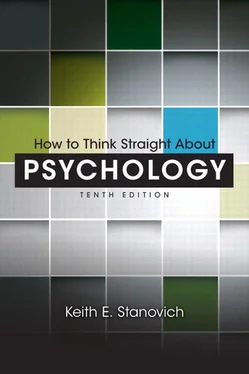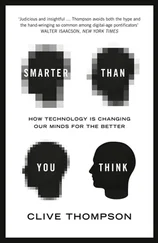There are seven windows in the head, two nostrils, two ears, two eyes and a mouth; so in the heavens there are two favorable stars, two unpropitious, two luminaries, and Mercury alone undecided and indifferent. From which and many other similar phenomena of nature such as the seven metals, etc., which it were tedious to enumerate, we gather that the number of planets is necessarily seven. . . . Besides, the Jews and other ancient nations, as well as modern Europeans, have adopted the division of the week into seven days, and have named them from the seven planets; now if we increase the number of planets, this whole system falls to the ground. . . . Moreover, the satellites are invisible to the naked eye and therefore can have no influence on the earth and therefore would be useless and therefore do not exist. (Holton & Roller, 1958, p. 160)
The point is not that the argument is laughably idiotic, but that it was seen as a suitable rebuttal to an actual observation! We laugh now because we have the benefit of hindsight. Three centuries of the demonstrated power of the empirical approach give us an edge on poor Sizi. Take away those years of empiricism, and many of us might have been there nodding our heads and urging him on. No, the empirical approach is not necessarily obvious, which is why we often have to teach it, even in a society that is dominated by science.
Empiricism pure and simple is not enough, however. Note that the heading for this section is “ Systematic Empiricism.” Observation is fine and necessary, but pure, unstructured observation of the natural world will not lead to scientific knowledge. Write down every observation you make from the time you get up in the morning to the time you go to bed on a given day. When you finish, you will have a great number of facts, but you will not have a greater understanding of the world. Scientific observation is termed systematic because it is structured so that the results of the observation reveal something about the underlying nature of the world. Scientific observations are usually theory driven; they test different explanations of the nature of the world. They are structured so that, depending on the outcome of the observation, some theories are supported and others rejected.
Publicly Verifiable Knowledge: Replication and Peer Review
Scientific knowledge is public in a special sense. By public, we, of course, do not mean that scientific observations are posted on community center bulletin boards. Instead, we refer to the fact that scientific knowledge does not exist solely in the mind of a particular individual. In an important sense, scientific knowledge does not exist at all until it has been submitted to the scientific community for criticism and empirical testing by others. Knowledge that is considered “special”—the province of the thought processes of a particular individual, immune from scrutiny and criticism by others—can never have the status of scientific knowledge.
Science makes the idea of public verifiability concrete via the procedure of replication. In order to be considered in the realm of science, a finding must be presented to the scientific community in a way that enables other scientists to attempt the same experiment and obtain the same results. When this occurs, we say that the finding has been replicated. Scientists use replication to define the idea of public knowledge. Replication ensures that a particular finding is not due simply to the errors or biases of a particular investigator. In short, for a finding to be accepted by the scientific community, it must be possible for someone other than the original investigator to duplicate it. When a finding is presented in this way, it becomes public. It is no longer the sole possession of the original researcher; it is instead available for other investigators to extend, criticize, or apply in their own ways.
The poet John Donne told us that “no man is an island.” In science, no researcher is an island. Each investigator is connected to the scientific community and its knowledge base. It is this interconnection that enables science to grow cumulatively. Researchers constantly build on previous knowledge in order to go beyond what is currently known. This process is possible only if previous knowledge is stated in such a way that any investigator can use it to build on.
By publicly verifiable knowledge, then, we mean findings presented to the scientific community in such a way that they can be replicated, criticized, or extended by anyone in the community. This is a most important criterion not only for scientists but also for the layperson, who, as a consumer, must evaluate scientific information presented in the media. As we shall see in Chapter 12, one important way to distinguish charlatans and practitioners of pseudoscience from legitimate scientists is that the former often bypass the normal channels of scientific publication and instead go straight to the media with their “findings.” One ironclad criterion that will always work for the public when presented with scientific claims of uncertain validity is the question, Have the findings been published in a recognized scientific journal that uses some type of peer review procedure? The answer to this question will almost always separate pseudoscientific claims from the real thing.
Peer review is a procedure in which each paper submitted to a research journal is critiqued by several scientists, who then submit their criticisms to an editor. The editor is usually a scientist with an extensive history of work in the specialty area covered by the journal. The editor decides whether the weight of opinion warrants publication of the paper, publication after further experimentation and statistical analysis, or rejection because the research is flawed or trivial. Most journals carry a statement of editorial policy in each issue, so it is easy to check whether a journal is peer reviewed.
Not all information in peer-reviewed scientific journals is necessarily correct, but at least it has met a criterion of peer criticism and scrutiny. Peer review is a minimal criterion, not a stringent one, because most scientific disciplines publish dozens of different journals of varying quality. Most scientific ideas can get published somewhere in the legitimate literature if they meet some rudimentary standards. The idea that only a narrow range of data and theory can get published in science is false. This is an idea often suggested by purveyors of bogus remedies and therapies who try to convince the media and the public that they have been shut out of scientific outlets by a conspiracy of “orthodox science.” But consider for a minute just how many legitimate outlets there are in a field like psychology. The APA database PsycINFO summarizes articles from over 2,000 different journals. Most of these journals are peer reviewed. Virtually all halfway legitimate theories and experiments can find their way into this vast array of publication outlets.
Again, I am not suggesting that all ideas published in peer-reviewed psychological journals are necessarily valid. On the contrary, I emphasized earlier that this is only a minimal criterion. However, the point is that the failure of an idea, a theory, a claim, or a therapy to have adequate documentation in the peer-reviewed literature of a scientific discipline is a very sure sign. Particularly when the lack of evidence is accompanied by a media campaign to publicize the claim, it is a sure sign that the idea, theory, or therapy is bogus. For example, in a famous Pennsylvania court case in 2005 regarding attempts to teach creationism in school biology classes, one of the witnesses advocating for intelligent design (a form of creationism) admitted that “he was unable to name any peer-reviewed research generated by intelligent design, though the movement has been around for more than a decade” (Talbot, 2005, p. 68).
Читать дальше












